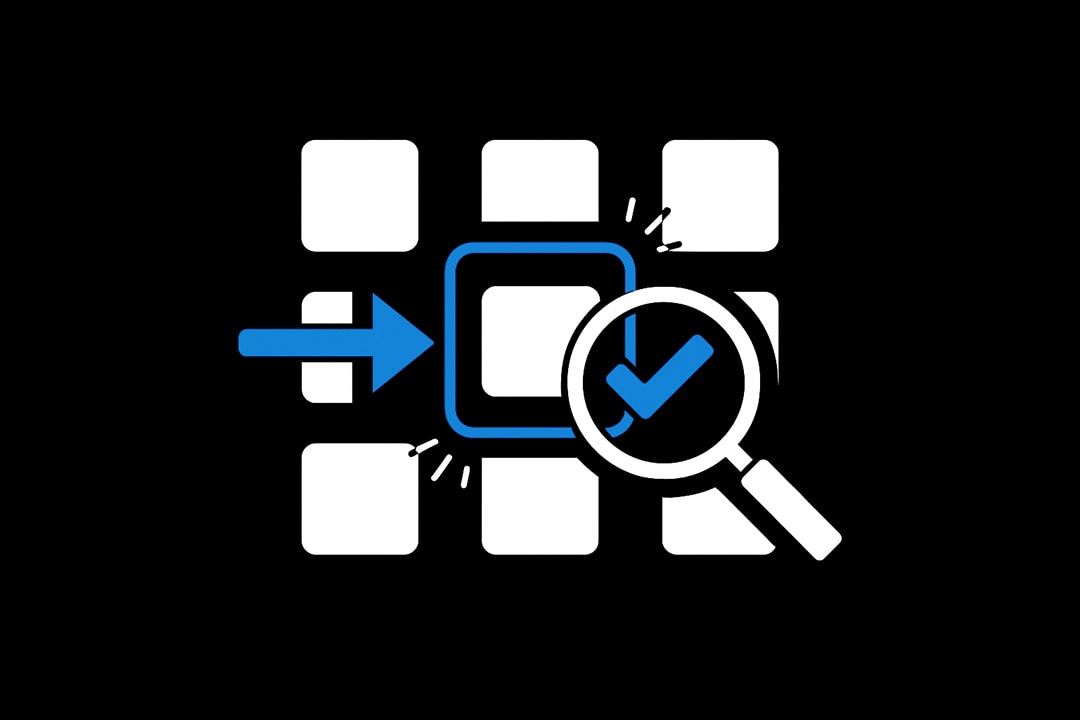Why device logging remains a headache for IT and how to fix it
Discover why device logging and monitoring remain a persistent challenge for IT teams, the real risks of manual tracking, and how a simple device logging tool can transform asset management, boost accountability, and cut costs.

Why endpoint management is harder than ever
Why device growth is outpacing control
The modern IT environment is a relentless game of cat and mouse, and the mice keep multiplying. The average enterprise is now responsible for over 135,000 endpoint devices and that number is only projected to rise as hybrid work, BYOD, and the explosion of IoT pull more endpoints into the network every month.
What used to be a manageable spreadsheet of laptops is now a sprawling, shifting ecosystem—laptops, tablets, phones, sensors, and edge nodes, all demanding visibility and oversight.
The challenge is not just the number but the velocity. Devices appear, disappear, travel across continents, and swap hands between teams. The asset register, once a living document, becomes a graveyard of good intentions when no one can say for sure where that missing MacBook or mystery Android tablet actually is.
According to IDC, 63% of IT leaders admit they lack real-time visibility into the physical location of all their devices (SecurityWeek, 2023). This isn’t just an inventory headache. It’s a security and compliance time bomb.
Why manual tracking is already broken
There’s a familiar ritual in many IT shops: the quarterly scramble for asset reconciliation. Spreadsheets are emailed, devices are hunted down, and there’s always that one phone someone swears was “returned last year.”
The numbers are damning. Nearly six in ten IT teams still rely on manual processes like spreadsheets for device tracking, and more than a third have no automated return process at all.
What’s the cost? Forrester reports that audit preparation times balloon by an average of 21 days per cycle because of these fragmented methods (Forrester, 2023).
Manual tracking doesn’t just waste time, it guarantees gaps. Human error, informal hand-offs, and forgotten updates turn the inventory into fiction. When incidents hit, 42% of organizations discover untracked endpoints only after the fact, not before. That’s not risk management, that’s risk roulette.
Why Incomplete Logging Drives Real-World Consequences
The stakes are higher than most admit. Lost or stolen devices are now responsible for 68% of breaches, according to Ponemon. These are not low-impact events. Each lost device is a potential vector for data exfiltration, regulatory penalties, and brand damage.
Regulators are not sympathetic to “we lost track of it.” When logs are incomplete or inaccurate, audit failures become routine, not rare—ISACA found that 74% of compliance failures in endpoint management stem directly from missing or bad device logs.
When device accountability slips, so does organizational trust. End users notice when IT is chasing ghosts. Leadership notices when audit results turn up surprises. And as the costs of device loss and unplanned downtime crack the top five IT operational risks, the pressure only mounts.
How the Friction Accumulates and Why IT Leaders Feel It Most
The result is a persistent, grinding friction. IT leaders are forced to play the enforcer, detective, and scapegoat for missing hardware and compliance gaps, all while trying to drive digital transformation and support the business. The emotional toll is real—navigating between innovation and stability with one hand tied behind the back by processes that simply cannot scale.
The core truth is this: device management is no longer a background task, it’s a source of risk and reputational exposure. Until the friction is addressed with the right tools and processes, IT teams will remain stuck in a cycle of firefighting, never quite sure if the next audit, breach, or lost device will be the one that makes headlines.
What’s broken in today’s device logging
Why asset sprawl creates blind spots
The promise of digital transformation is speed, agility, and scale. The reality for most IT teams is asset sprawl—thousands of devices multiplying across a distributed workforce, with each new endpoint representing a potential blind spot. Even the best-run organizations routinely discover unknown or untracked endpoints, usually not during proactive reviews, but in the middle of an incident or audit.
According to Cybersecurity Dive, 42% of organizations only realize certain endpoints exist when forced to respond to an incident, not during normal monitoring. This isn’t a matter of “nice-to-have” oversight. It’s a fundamental breakdown in visibility, and it’s letting risk creep in through the back door.
The costs are real. Ponemon Institute found 68% of data breaches originate from lost or stolen devices. With each new device added to the environment, the probability of missing, lost, or poorly tracked hardware grows. The consequences aren’t theoretical—every missing device is a potential compliance failure, a source of sensitive data loss, or a regulatory red flag.
How manual processes compound the problem
Manual device tracking is the biggest open secret in IT. Despite decades of promising automation, 58% of IT teams still rely on spreadsheets to manage inventory. Spreadsheets might work for a handful of assets, but they quickly become unreliable as the environment grows. Version control issues, accidental overwrites, and inconsistent data entry introduce errors that multiply over time.
The downstream effects are brutal. Forrester reports that manual tracking inflates audit preparation by an average of 21 days per cycle. That’s nearly a month lost every year just reconciling what should be a live snapshot of the environment. Even worse, 35% of organizations have no automated return process for hardware, raising the stakes when employees leave or shift roles. The handoff between HR and IT is a notorious point of failure, and it’s only getting worse as workforces become more fluid.
Why compliance remains a moving target
Regulatory frameworks like GDPR, HIPAA, and SOX have added new urgency to the device logging conversation. Auditors and regulators expect granular, accurate logs that can be produced on demand. But ISACA’s State of Cybersecurity 2024 found that 74% of compliance failures related to endpoint management are due to missing or inaccurate logs. TechTarget reports that 41% of organizations are unable to produce required logs when asked, exposing them to fines and reputational damage.
How accountability gaps drain time and money
When devices slip through the cracks, accountability disappears. IT Brew highlights that 29% of company laptops are overdue for return at any time, and 17% are never recovered, costing U.S. businesses more than $2.6 billion every year. Gartner now ranks device loss and unplanned downtime among the top five operational risks for IT organizations.
The cumulative effect is a kind of organizational fatigue—IT teams run audit drills, chase overdue returns, and patch logs after the fact, always a step behind real accountability. The signal is clear. The old ways are not working, and the numbers prove it.
Why the industry finally agrees on the fundamentals
Sometimes the market is divided. Not here. On the basics of device management, the consensus is blunt and universal: manual tracking is obsolete. The era of spreadsheet-driven asset inventories and post-it note sign-outs is over, and every credible authority says so.
Gartner, Forrester, ISACA, TechTarget—pick your favorite—each makes it clear that without automation and real-time tracking, organizations are setting themselves up for failure.
Automation is not just about efficiency. It is about visibility, accountability, and auditability. The highest-performing organizations have moved to centralized systems where every device movement, check-in, and overdue return is logged, timestamped, and tied to a real user. This is not just for show. Audit prep is faster, compliance rates improve, and the “who, what, and where” are always a few clicks away.
User accountability is the linchpin. It is not enough to track assets generically. The best organizations tie devices to individual users, enforce check-in/out, and generate overdue reminders. This closes the gap between policy and practice.
How much automation is truly enough
Agreement ends when the question turns to scope and complexity. For large enterprises with deep pockets and thousands of endpoints, the lure of all-in-one MDM (Mobile Device Management) or UEM (Unified Endpoint Management) platforms is strong. These solutions offer deep policy enforcement, remote wipe, and integrations with everything from HRIS to ERP. For the Fortune 500, that makes sense.
But not everyone is running a multinational. For midsize organizations or specific departments, full-suite solutions can be overkill—expensive to implement, complex to maintain, and often packed with features that go unused.
Forrester notes that many organizations see diminishing returns once the basics of tracking and logging are covered (Forrester, 2023). Sometimes a lean, purpose-built device logging system is the right fit: less setup, less overhead, and still a huge leap over spreadsheets.
Integration depth remains a point of contention
Integration is the next fault line. Larger enterprises demand deep synchronization with HR or ERP systems, so device status updates automatically when someone is hired, fired, or changes departments. This is good in theory, but in practice, integration projects can drag on for months and drain resources from more urgent work.
Mid-market and smaller organizations, on the other hand, often prefer the simplicity of standalone apps that offer exportable reports and basic API hooks. The lesson? One size does not fit all. The right solution is the one that fits your team’s size, budget, and appetite for complexity.
Move the needle with culture and accountability
No matter the tech stack, the organizations that win at device management are the ones that make accountability part of their culture. Technology is the enabler, but process and discipline are what make it stick.
The best tools are the ones people actually use—tools that make it easy to log a device, impossible to ignore an overdue return, and trivial to produce evidence when the auditors come calling.
Why a simple device logging tool could help
It’s easy to overlook a basic device logging tool, but the reality is, this is where chaos turns into control. When devices start moving—out to remote teams, project work, or travel—the cracks in spreadsheets and sign-out sheets are exposed. Suddenly, no one knows who has what, and lost hardware becomes an expensive, risky guessing game.
The numbers don’t lie. Gartner reports that more than 60 percent of enterprises can’t keep real-time tabs on their devices. That’s not just a spreadsheet problem—it’s a security and compliance risk, especially as hybrid work expands.
More than efficiency, this transparency builds accountability. People return devices on time, hardware is respected, and IT leaders are freed from endless asset hunts. The simplicity is the real breakthrough: less time lost, fewer headaches, and far fewer missing assets.




